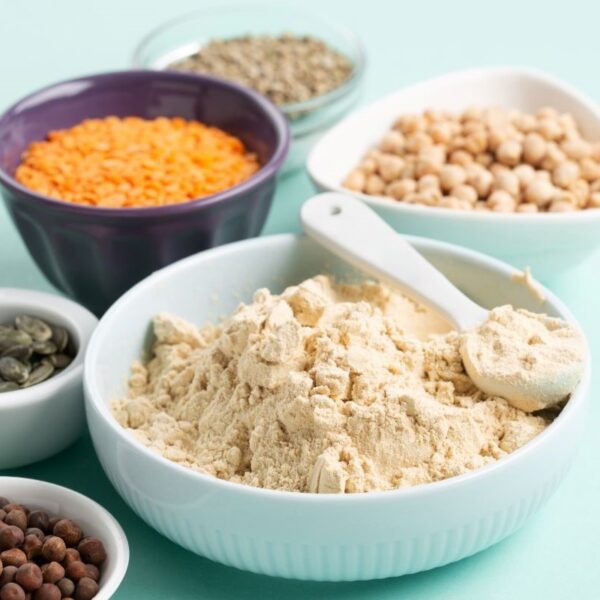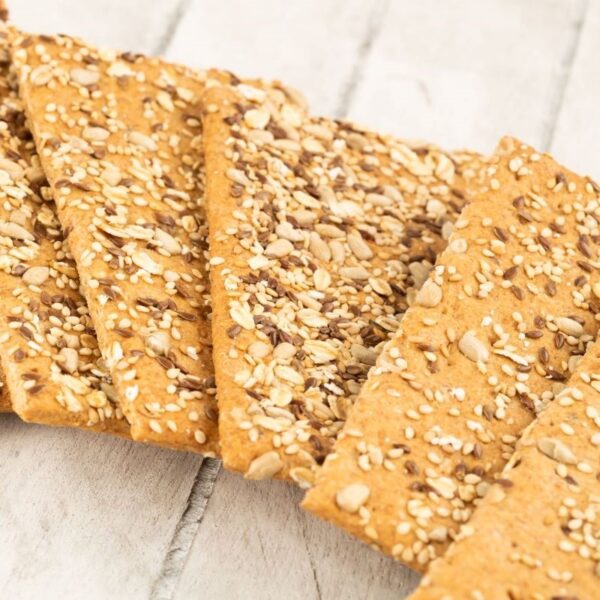Propionic Acid, also known as Carboxyethane, has long-standing use in the food industry, particularly as the fatty acid in many processed foods. It has a long history as a natural intermediate and metabolite in many biological processes. Propionic Acid is also used as a preservative as it helps inhibit mold growth and various bacteria for food and animal feed. This fungistatic compound is an agent that slows bacterial growth without eliminating the bacteria.
This article provides a comprehensive overview of the uses and applications of propionic acid in food products, emphasizing its functions, chemical properties, formulation considerations, and regulatory matters.
What is Propionic Acid?
Propionic Acid is an organic acid with a carboxyl functional group. This three-carbon atom chain organic acid is a colorless liquid with a pungent smell at room temperature. Its typical applications in food products stem from its potent antimicrobial and preservative attributes. Propionic acid is a flammable and volatile liquid, alternatively known as propanoic acid or carboxyethane. C₃H₆O₂ represents the chemical formula for Propionic Acid, and the structure for the same is given in the below image:
Source: Wikipedia
How is Propionic Acid Produced?
This acid is produced naturally by a bacterial strain called Propionibacterium. This bacteria decomposes amino acids and ferment sugar molecules to produce Propionic Acid.
Industrially, Propionic Acid is produced by hydrocarboxylation of the ethene molecule. The hydrocarboxylation process involves introducing carbon monoxide to an organic substrate, which is ethene. Ethene reacts with carbon monoxide and water to produce propionic acid.
Use of Propionic Acid in the Food Industry
Primarily, propionic acid acts as a food preservative due to its strong antimicrobial action against molds and some bacteria. It is often used in baked goods, processed cheese, and other dairy products to inhibit the growth of harmful microorganisms, thus extending the product’s shelf-life.
Applications in the Food Industry
Propionic Acid is a major food additive & intermediate used for various purposes. In food applications, its primary functions are:
| Function | Applications |
| Mold/bacterial Inhibitor | As a mold/bacterial inhibitor, propionic acid permeates microbial cell walls, disrupts their metabolism, and effectively prevents their growth, thereby prolonging the shelf life of food products. |
| Feed Preservative | When used as a feed preservative, propionic acid inhibits undesired microbial growth. |
| Flavoring Agent | As a flavoring agent, propionic acid contributes to the characteristic nutty flavor of Swiss cheese and is utilized to enhance the taste of various processed foods. |
Product Examples
| Type | Examples |
| Bakery | Bread, Cake |
| Confectionery | Confections, Frostings, Gelatins, Puddings, Fillings |
| Dairy | Cheese |
Properties of Propionic Acid
| Typical Properties | Value |
| Chemical formula | C3H6O2 |
| Molar mass | 74.079 g·mol−1 |
| Appearance | Colorless, oily liquid |
| Odor | Pungent, rancid, unpleasant |
| Density | 0.98797 g/cm3 |
| Melting point | −20.5 °C (−4.9 °F; 252.7 K) |
| Boiling point | 141.15 °C (286.07 °F; 414.30 K) |
| Solubility in water | 8.19 g/g (−28.3 °C) 34.97 g/g (−23.9 °C) Miscible (≥ −19.3 °C) |
| Solubility | Miscible in Ethanol, Ether, Chloroform, Water |
| Typical Properties | Value |
| Chemical formula | C3H6O2 |
| Molar mass | 74.079 g·mol−1 |
| Appearance | Colorless, oily liquid |
| Odor | Pungent, rancid, unpleasant |
| Density | 0.98797 g/cm3 |
| Melting point | −20.5 °C (−4.9 °F; 252.7 K) |
| Boiling point | 141.15 °C (286.07 °F; 414.30 K) |
| Solubility in water | 8.19 g/g (−28.3 °C) 34.97 g/g (−23.9 °C) Miscible (≥ −19.3 °C) |
| Solubility | Miscible in Ethanol, Ether, Chloroform, Water |
| Typical Properties | Value |
| Chemical formula | C3H6O2 |
| Molar mass | 74.079 g·mol−1 |
Typical Formulations
Cassava Bread
Cassava bread was prepared using the following ingredient composition with calcium propionate.
| Ingredient | Composition |
| Wheat Flour | 600 g |
| Cassava Flour | 10/20/40% substitution of wheat flour |
| Sugar | 38 g |
| Margarine | 35 g |
| Dried Yeast | 20 g |
| Salt | 2.5 g |
| Water | 330 ml |
| Ascorbic acid | 1.8 g |
| Calcium propionate | 3.6 g |
Source: ResearchPublish
White Bread
White bread was prepared using the following ingredient composition with calcium propionate.
| Formulation | Ingredient | Composition |
| Sponge (% on flour basis) | Soya Oil | 2.5 % |
| Sodium Stearoyl Lactylate | 0.38 % | |
| Yeast | 5 % | |
| Wheat Flour | 60 % | |
| Calcium Propionate | 0.1 % | |
| Water | 62 % | |
| Dough (% on flour basis) | Ascorbic Acid | Depends on each type of flour. |
| Azodicarbonamide | 20 ppm | |
| Salt | 2 % | |
| Glucose | 7 % (dry substance) | |
| Water | Depends on each type of flour. | |
| Wheat Flour | 40 % | |
| Calcium Propionate | 0.0, 0.15, 0.275, 0.40 % | |
| Novozymes A/S 10.000 BG | 900 MANU | |
| Hydrated Distilled Double Strength Monoglycerides | 0.5 % |
*MANU: Maltogenic alpha-amylase
Propionic Acid Formulation Considerations
Effect on the shelf life of food products
Propionic acid inhibits mold and rope bacterial growth but has a negligible effect on yeast. If used in proper concentration, they can significantly improve the shelf life of bread, cheese, and various other edible goods and animal feedstock. The optimal pH range for its antimicrobial effectiveness is from 2.5 to 5.5. Molds are a significant problem for bakeries, especially in sliced bread. Calcium and sodium propionate or sorbate can be added to bread formulation as fungistatic additives. The dosage limit is 0.3 % (w/w) for propionates. In the case of unsliced bread, the maximum limit for propionate is lowered to 0.1% due to smaller exposed surfaces.
Salts of Propionic Acid
Sodium and calcium salts of propionic acids, sodium propionate, and calcium propionate are highly effective as preservatives in food. Calcium propionate is a food additive in various products like bread goods, processed meat, whey, and dairy products. It inhibits the microorganism’s capability to reproduce to preserve multiple foods. It is especially active against the rope-forming bacterium Bacillus mesentericus; this spore-former is inhibited even at pH 6.0. Some Gram-negative bacteria are also inhibited. Sodium propionate at levels of 0.1–5.0% delays the growth of Staphylococcus aureus, Sarcina lutea, Proteus vulgaris, Lactobacillus plantarum, Torula, and Saccharomyces ellipsoideus by 5 days. Organic acids, including propionic acid, are effective with heating against Salmonella and yeast.
Dosage
The dosage recommendations for Propionic Acid vary depending on the product. The upper dosage limit for products like bread rolls and cheese is 0.3-0.38 %, but in unsliced bread, the maximum limit for propionates is about 0.1%.
Sensory Properties
Propionic Acid tastes pungent, while its salts have a more Swiss cheese-like flavor and a disagreeable rancid odor.
Absorption & Metabolism
Propionic acid quickly gets absorbed through the gastrointestinal tract and the skin. Once ingested, very little is excreted in the urine. The blood carries propionic acid to the liver, which is metabolized and removed.
Comparison with other Acidulants
Based on the antibacterial mechanism, one of the leading indicators of organic acid preservative efficiency is a higher dissociation constant (pKa). Propionic Acid has a higher pKa than other organic acids used in feed.
| Acid | Physical State (at 25 °C) | pKa |
| Citric | Solid | 3.1 |
| Formic | Liquid | 3.75 |
| Lactic | Liquid | 3.75 |
| Acetic | Liquid | 4.76 |
| Sorbic | Solid | 4.76 |
| Propionic | Liquid | 4.88 |
Source: Dow
Safety & Regulatory Considerations
The U.S. Food and Drug Administration (FDA) governs propionic acid and its salts in food products. Compliance with these regulations is crucial to ensure the safe consumption of food products containing propionic acid.
FDA Information
- Propionic Acid is Generally Recognized as Safe by US Food and Drug Administration. The ingredient meets the specifications of the Food Chemicals Codex, 3d Ed. (1981), p. 254.
- Per § 184.1(b)(1), the ingredient is used in food with no limitation other than current good manufacturing practice. The affirmation of this ingredient as generally recognized as safe (GRAS) as a direct human food ingredient is based upon the following current good manufacturing practice conditions of use:
- It is approved as an antimicrobial agent & flavoring agent by the FDA.
- The US Food and Drug Administration (FDA) lists the acid, and the Na+, Ca2+, and K+ salts, as preservatives in their summary of generally recognized as safe (GRAS) additives, and no upper limits are imposed except for bread, rolls, and cheeses (0.30–0.38%).
Identification Numbers
| Chemical Name | propionic acid |
| CAS Number | 79-09-4 |
| EC Number | 201-176-3 |
| INS No. (Food Additive) | E 280 |
| JECFA Number | 84 |
| FEMA Number | 2924 |
Fun Facts About Propionic Acid
- Propionic acid is a key contributor to the distinct flavor of Swiss cheese.
- Besides its role in food, propionic acid finds use in several other industries, including the production of cellulose-based plastics, herbicides, and pharmaceuticals, highlighting its versatile nature.
- Propionic acid is often used in agriculture as an antifungal agent. It is beneficial for preventing mold growth in stored grains, a critical component in ensuring food security.
- Ancient Romans seemed to understand the preservative power of propionic acid. They noted that mold was less likely to develop on bread stored in straw, a natural source of this preservative.
Additional Resources
- Propionic Acid – ScienceDirect
- Propionic Acid – PubMed
- Fermented Flour Natural Mold Inhibitor – Vaishnavi Biotech
- Propionic Acid: Uses & Safety – Study.com
- Propionic Acid – Kemin
- Propisave LC Feed Supplement Buffered Propionic Acid – Demo Knowde
- A Study on Possible Use of Calcium Propionate – Research Publish
- Propionate Sodium – ScienceDirect
- Calcium Propionate – Kemin
- Effect of Calcium Propionate on the Inhibition of Fungal Growth in Bakery Products – ResearchGate
- Propionic Acid for Animal Feed – Dow
- CFR – Code of Federal Regulations Title 21








